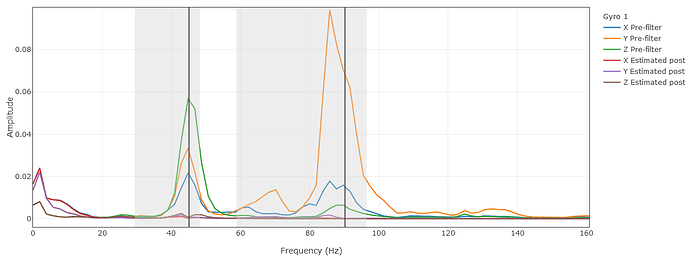Dear Friends,
Am using quadcopter with pixhawk V5+, and working on dynamic FFT tuning. I have provided the parameter settings detail below. I made the test fligth with same settings, has a stable flight and the corresponding flight log is attached for your kind reference.
Please clarify the following quries on FFT dynamic tuning,
- For FFT turnig Alt hold or Loiter mode, which mode is preferable.
- How to check frequency and bandwidth through log.
- Wheter frequecy and bandwidth changes automatically on flight, if FFT dynamic is enabled.
- For sampling 1 IMU or 2 IMU is preferable.
- For Harmonnic notch fillter settings: what is the role of attenuation value and please specify how to find the attenuation value.
- As seen from literature, the reference frequency value selection is that half the value of bandwidth, its true.
- Plase guide me to chose the sutable frequency and bandwidth value throught fligth log.
- Please check the correctnes of below mensioned the settings for dynamic FFT and throttle based notch fillter.
Dynamic FFT Tribble Notch Filter
Ins_log_bat_mask= 3
Ins_log_bat_opt= 4
Ins_hntch_bw= 40
Ins_hntch_enable =1
Ins_hntch_fm_rat=1
Ins_hntch_freq=80
Ins_hntch_hmncs=3
Ins_hntch_mode=4
Ins_hntch_opts=16
Ins_hntch_ref=1
2.Throttle based
Ins_log_bat_mask= 3
Ins_log_bat_opt= 4
Ins_hntch_bw= 40
Ins_hntch_enable =1
Ins_hntch_fm_rat=1
Ins_hntch_freq=80
Ins_hntch_hmncs=3
Ins_hntch_mode=1
Ins_hntch_opts=0
Ins_hntch_ref=1
With Thanks & Regards
Dr.V. Kirubakaran

